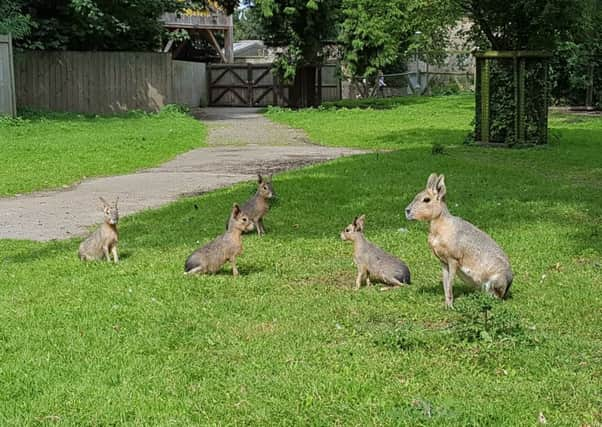View from the Zoo: Patagonian mara


The zoo currently has a group of six female adults, a young mara that is six months old and recently the addition of more babies. One female has given birth to triplets who are now eight weeks old and another has given birth to a single baby who is now six weeks old. The young form crèches and can be seen hanging out together with their mothers not too far away.
Patagonian mara are social animals that live in large groups in the wild. They are monogamous meaning they will pair for life. The females dig communal burrows so their young can be reared together with the offspring of several other breeding pairs. After a gestation period of around 90-100 days females will give birth near to the entrance of the burrow. Each female will generally have between one and three well developed young who are born with their eyes open. This is so they can move quickly into the communal burrow away from danger.
Advertisement
Hide AdAdvertisement
Hide AdThe offspring will stay near the burrow for the next few months whilst the females come back to feed them. They are usually weaned at 13 weeks of age.
Patagonian mara are endemic to Argentina inhabiting grasslands and scrub desert. They are herbivores feeding on a variety of vegetation.
To escape predators they have long powerful hind limbs that are built for running and are able to reach speeds of up to 35mph. Their front limbs are shorter and have four sharp claws that help them to dig burrows. They are usually active during the day unlike some other rodents, and like to bask in the sun. When threatened they usually flee by galloping or by using a form of movement called stotting which involves rapid bounces on all four limbs at once.
The Patagonian mara is classified as near threatened by the International Union for Conservation of Nature and is their red list of threatened species.